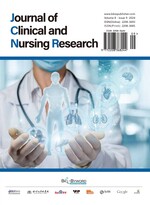Abstract
Objective: This study aims to investigate the influenza vaccination status of children aged 0–6 years in Changzhi City and to analyze its influencing factors. Methods: A questionnaire was distributed to 228 randomly selected parents of children aged 0–6 in Changzhi City to investigate the children’s influenza vaccination status. Results: (1) A total of 217 valid questionnaires were collected in this survey, with a response rate of 95.2%. (2) The results showed that the main reasons affecting children’s influenza vaccination were, in order, worrying about the safety of the influenza vaccine, believing that influenza vaccination was not necessary, and not knowing the time of the vaccination. (3) Multivariate logistic regression analysis showed that compared with children aged 0–2 years old, those aged 2–4 years old (OR = 0.121, 95% CI = 0.032–0.301) and 4–6 years old (OR = 0.385, 95% CI = 0.228–0.530) had lower cumulative influenza vaccination rates. Compared to the group with parental awareness of flu vaccines, the moderate awareness group (OR = 2.319, 95% CI = 1.527–3.015) and the high awareness group (OR = 2.932, 95% CI = 1.598–4.966) exhibited higher cumulative influenza vaccination rates among children. Parents acquire knowledge about influenza and its vaccines through vaccination centers (OR = 1.396, 95% CI = 1.049–2.050) and doctors (OR = 1.763, 95% CI = 1.291–2.774), which serves as a facilitating factor for influenza vaccination among 0–6-year-old children in Changzhi urban area. Conclusion: The age of the child, parental knowledge of the influenza vaccine, and parental communication with the vaccination center and the physician at the visit were the main influencing factors for influenza vaccination.
References
Yuan H, Lin LF, Wang F, 2019, Effect of Influenza Vaccination on Prevention of Influenza in Children. Chinese Journal of Health in Urban and Rural Enterprises, 38(08): 71–73.
Zhang Y, 2023, Study on Clinical Efficacy and Adverse Reactions of Influenza Vaccine in Children. Famous Doctor, (05): 87–89.
Sun Y, 2021, Beijing School-Age Children Influenza Vaccination Effect Evaluation Research, dissertation, The Chinese Center for Disease Control and Prevention.
Kazuhiro M, Wakaba F, Saeko M, et al., 2021, Influence of Prior Influenza Vaccination on Current Influenza Vaccine Effectiveness in Children Aged 1 to 5 Years. Vaccines, 9(12): 1447.
Chen D, Jiang Y, Huang F, et al., 2021, Effectiveness of Influenza Vaccination for School-Age Children in Preventing School Absenteeism in Shenzhen: An Empirical Study. Chinese Journal of Epidemiology, 42(10): 1900–1906.
Yoon Y, Choi JS, Park M, et al., 2021, Influenza Vaccine Effectiveness in Children at the Emergency Department during the 2018-2019 Season: the First Season School-Aged Children Were Included in the Korean Influenza National Immunization Program. Journal of Korean Medical Science, 36(10): e71.
Principi N, Esposito S, 2018, Influenza Vaccine Use to Protect Healthy Children: A Debated Topic. Vaccine, 36(36): 5391–5396.
Technical Guidelines for Influenza Vaccination in China (2023–2024), 2024, Chinese Journal of Viral Diseases, 14(01): 1–19.
Wang W, 2021, Research on the Current Status and Effectiveness of Pediatric Influenza Vaccination in a Certain City in Henan Province in 2019. Shanxi Medical Journal, 50(04): 645–646.
Yang J, 2021, A Study on Vaccine Safety Regulation——A Case Study of 13 Vaccine Incidents, dissertation, Shanxi University.
Yu W, Li F, Zhang Z, et al., 2014, Investigation and Analysis of the Trust of Parents of Children in Some Provinces Towards Vaccination After the 2013 Media Report on the Hepatitis B Vaccine Incident. Chinese Vaccines and Immunization, 20(03): 233–236.
Xia Z, Shen G, Cheng Y, et al., 2020, Investigation on the Impact of Changchun Changsheng Vaccine Incident on the Trust of Children’s Guardians in Vaccination in Xuancheng City. Practical Preventive Medicine, 27(11): 1364–1366.
Gan L, Wang X, Zou Y, 2019, Knowledge, Attitude and Influencing Factors of Shenzhen Residents Towards Vaccination After the Changchun Changsheng Vaccine Incident. Chinese Tropical Medicine, 19(08): 762–766.
Wang C, Li G, Zhang Y, et al., 2019, Investigation on the Current Situation of Vaccination for Children Aged 0–6 in a County After the “Shandong Vaccine Incident.” Practical Preventive Medicine, 26(02): 185–188.
Cui Y, 2018, Epidemiological Analysis of Influenza in Changzhi City from 2013 to 2017. Journal of Changzhi Medical College, 32(03): 188–190.
Xu B, 2015, Research on Improving Vaccination Services in Remote Mountainous Areas Through Mobile SMS Reminders, dissertation, Chinese Center for Disease Control and Prevention.
Chen W, Chen Y, 2015, Analysis of the Impact of SMS Reminder Service on Vaccination Rates. Journal of Strait Preventive Medicine, 21(02): 93–94.
Ye L, Fang T, Ma R, et al., 2019, From June 2010 to June 35, 2018, Ningbo City, Zhejiang Province Analysis of Seasonal Influenza Vaccination Rates in Children of Various Ages. Chinese Vaccines and Immunization, 25(01): 88–91 + 95.
Jiang Y, Han X, Fan Z, et al., 2023, Analysis of Knowledge and Recommendation of Influenza Vaccine Among Primary Health Care Workers. Preventive Medicine Forum, 29(10): 755–760.
